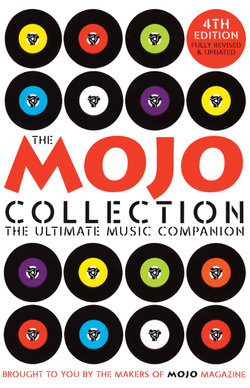Читать книгу The Mojo Collection - Various Mojo Magazine - Страница 8
На сайте Литреса книга снята с продажи.
Peggy Lee Black Coffee Who would have thought Norma Deloris Egstrom would have had a voice like this?
ОглавлениеRecord label: Decca
Produced: Cy Godfrey
Recorded: New York City; April 30, May 1 and 4, 1953
Released: 1953
Chart peaks: None (UK) None (US)
Personnel: Peggy Lee (v); Pete Condoli (t); Jimmy Rowles (p); Max Wayne (b); Ed Shaughnessy (d)
Track listing: Black Coffee; I’ve Got You Under My Skin; Easy Living; My Heart Belongs To Daddy (S); A Woman Alone With The Blues; I Didn’t Know What Time It Was; When The World Was Young; Love Me Or Leave Me
Running time: 20.35
Current CD: Verve 9863193 reissue of the 1956 12-inch edition with additional tracks: It Ain’t Necessarily So; Gee, Baby Ain’t I Good To You?; You’re My Thrill, There’s A Small Hotel
Further listening: The Man I Love, a bundle of string-laden ballads, recorded with an orchestra conducted by Frank Sinatra and containing a superlative The Folks That Live On The Hill.
Further reading: The Life And Music of Miss Peggy Lee (Peter Richmond, 2006); Miss Peggy Lee (1992), an autobiography that fills many gaps without being entirely satisfactory; www.peggylee.com
Download: Not currently legally available
Undoubtedly among the finest female singers to grace the world of popular music, Peggy Lee was vocally equipped to sing blues, jazz, Broadway standards or even cornball material, though she generally steered clear of the latter. She was also an accomplished songwriter; she fashioned the soundtrack for The Lady And The Tramp and picked up an Oscar nomination for her acting ability. All this and beauty too.
It was a long road to her debut album. Born Norma Deloris Egstrom, she began as a teenage singer in 1936 with the Jack Wardlow Band, then joined Will Osborne (1940–41) before becoming part of vocal group The Four Of Us. Heard by King of Swing Benny Goodman, she became vocalist with his highly rated outfit, cutting her first records within days of taking the job and notching her first hit that same year with a cover of Duke Ellington’s I Got It Bad And That Ain’t Good. After several other hits with the Goodman outfit, she married the band’s guitarist, Dave Barbour, whose own band featured on many of her initial solo recordings. Signed first to Capitol and then to Decca, Peg notched over 30 hit singles of varying quality (one was titled Bum, Bum, I Wonder Who I Am) between 1945 and 1953, when the opportunity arose to cut her first long-player.
It was released in ten-inch form with a mere eight tracks (four other songs, recorded at a Los Angeles session in April 1956 were added when the record eventually appeared as a 12-inch). But with those original eight tracks the singer established herself in the very top echelon, alongside Billie Holiday and Ella Fitzgerald. Though there was no outlet for her R&B talents, later manifest on such singles as The Comeback, Black Coffee allowed Peg the opportunity to swing effortlessly and phrase with dangerous abandon on such songs as I’ve Got You Under My Skin, faultlessly conjure a four-in-the-morning mood on the torchy title track, or interpret Johnny Mercer’s superb lyric to When The World Was Young in such a manner that, to date, no one has yet managed to extract from it so much emotion or bestow it with such fragility.
